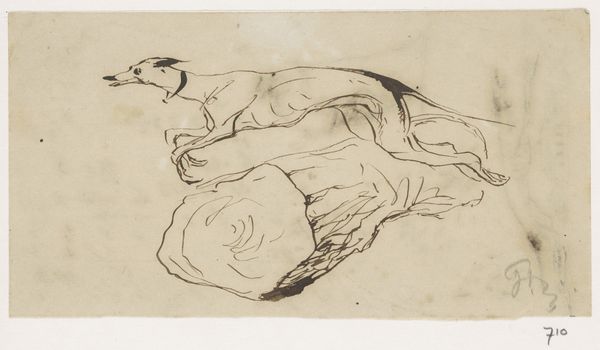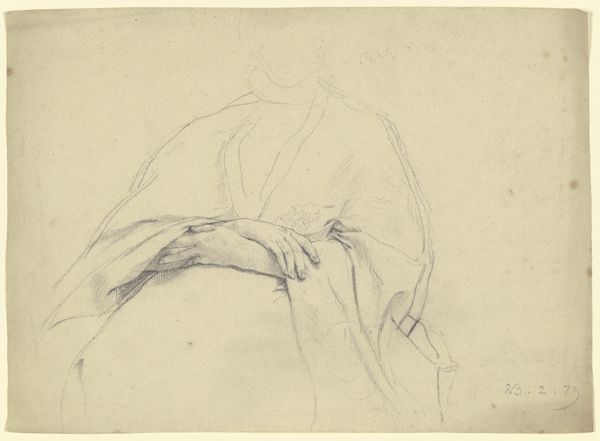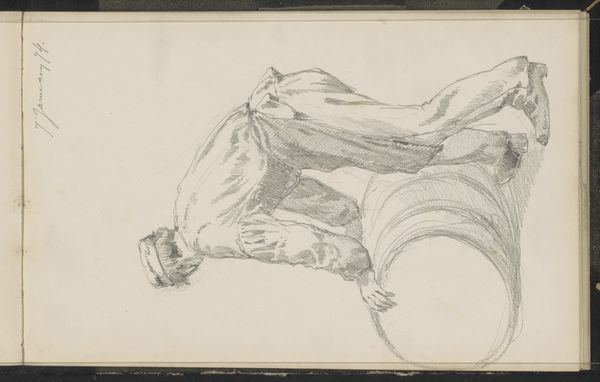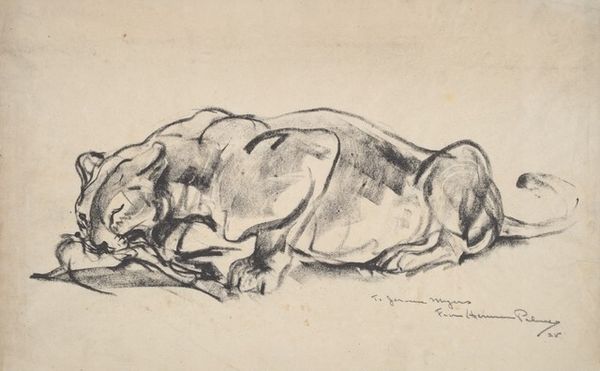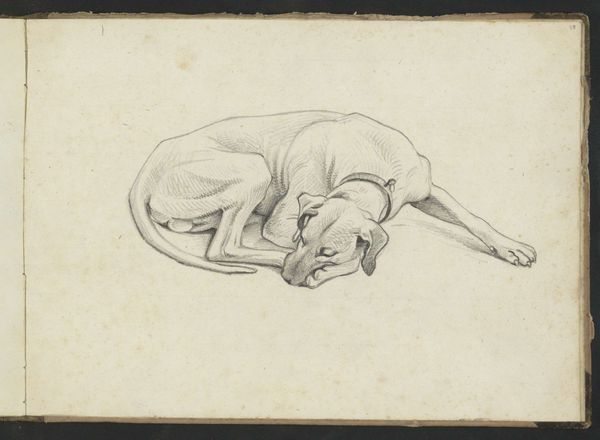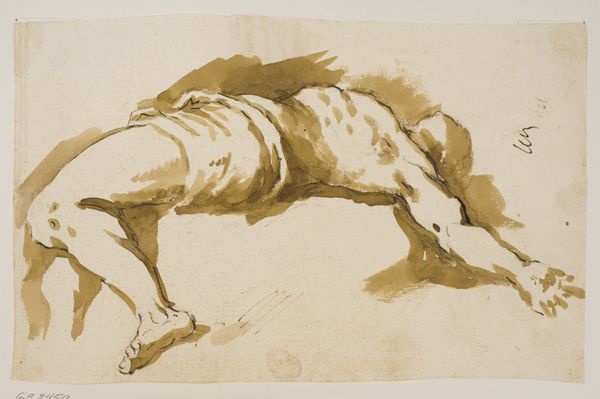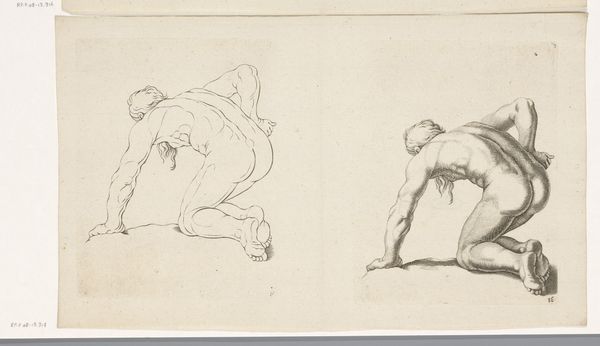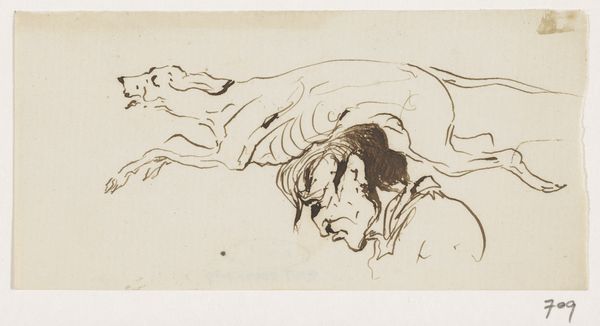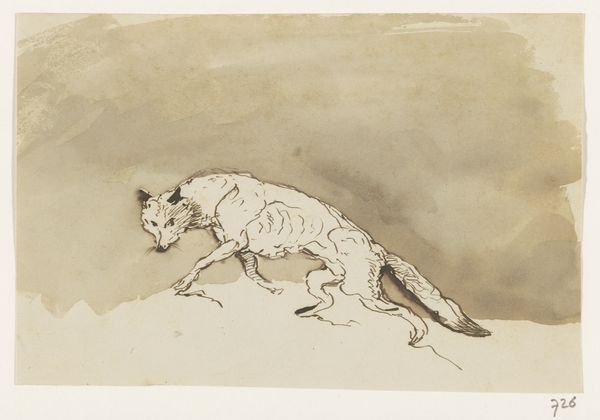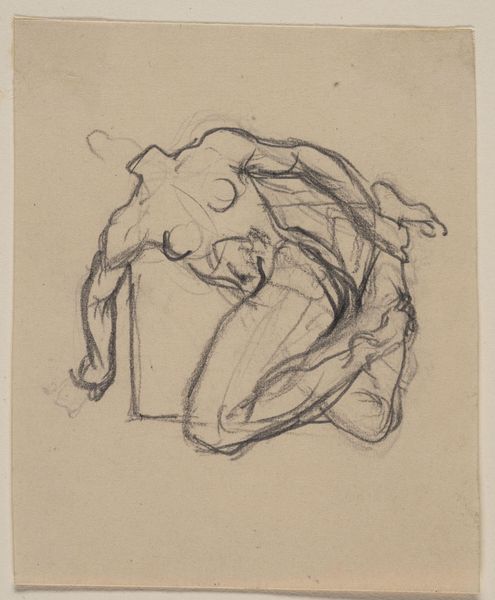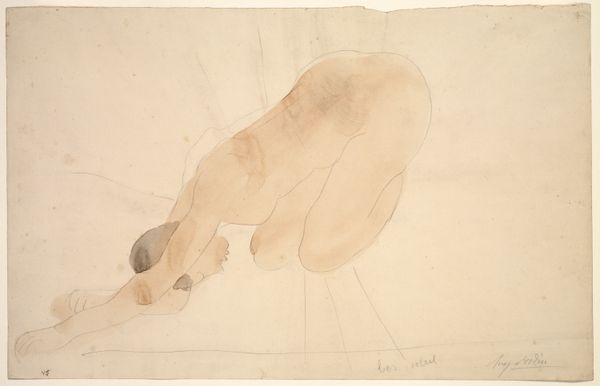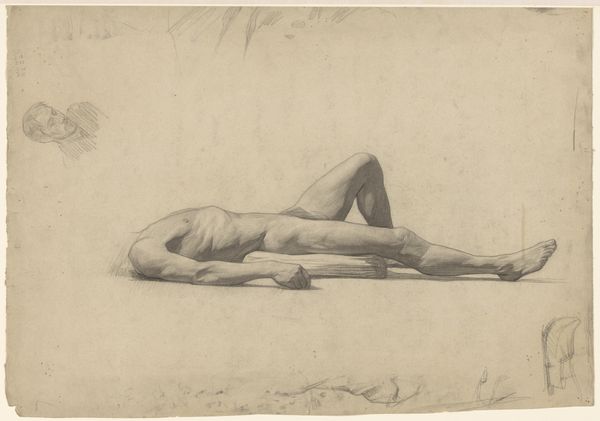
drawing, paper, ink
#
drawing
#
ink drawing
#
etching
#
figuration
#
paper
#
ink
#
genre-painting
#
realism
Dimensions: height 107 mm, width 166 mm
Copyright: Rijks Museum: Open Domain
Curator: Here we have "Karkas van een dier," or "Carcass of an Animal," an ink drawing on paper by Johannes Tavenraat, created sometime between 1840 and 1880. It resides here at the Rijksmuseum. Editor: Gosh, my initial impression is… visceral. It’s not prettified at all. The artist really lingered on the unlovely aspects, didn't they? I mean, the thing is just splayed out, a stark depiction of mortality and, well, butchery, I suppose. Curator: Absolutely. Tavenraat seems quite deliberate in his rendering, doesn't he? He has carefully employed ink wash techniques, using different dilutions to suggest the animal's form, almost dissecting it before our eyes. It raises questions about what, for Tavenraat, constitutes an acceptable or even desirable subject. What sort of function does art have here? Is it a celebration of realist skill? A commentary on animal consumption? It's almost academic in its blunt presentation. Editor: Maybe both? I see an artist working in a tradition, sure, but then adding his own strange sensitivity, a real intensity of feeling about this inert mass. It makes me think of Dutch still lifes, those elaborate feasts that always had that skull lurking somewhere, a kind of *memento mori*. Except here, the vanitas is the main course. Curator: Indeed. Considering the probable social context, the prevalence of hunting and butchery in 19th-century Netherlands, such a stark depiction might prompt reflection on our relationship with animals, both in life and death. Tavenraat has used accessible, inexpensive material, like paper and ink, a deliberate choice that might reflect his social stance as an artist too. Editor: I can see that. The economic context is fascinating. But for me, it's mostly the brute fact of the animal. He gets it right in all its lumpy, limp reality, this animal has become just the stuff of the Earth once again, returning from whence it came. The light catches the skin in such a way that even decay is made… strangely compelling. Curator: Precisely. An unsettling reminder that even in art, our gaze and our relationship to subjects—living, dead, or otherwise—are never neutral. Editor: A little darker than my usual Sunday stroll through a museum, but… hey, thanks for sharing the grim beauty of it all with me. I learned a lot about not shying away from hard looks!
Comments
No comments
Be the first to comment and join the conversation on the ultimate creative platform.
